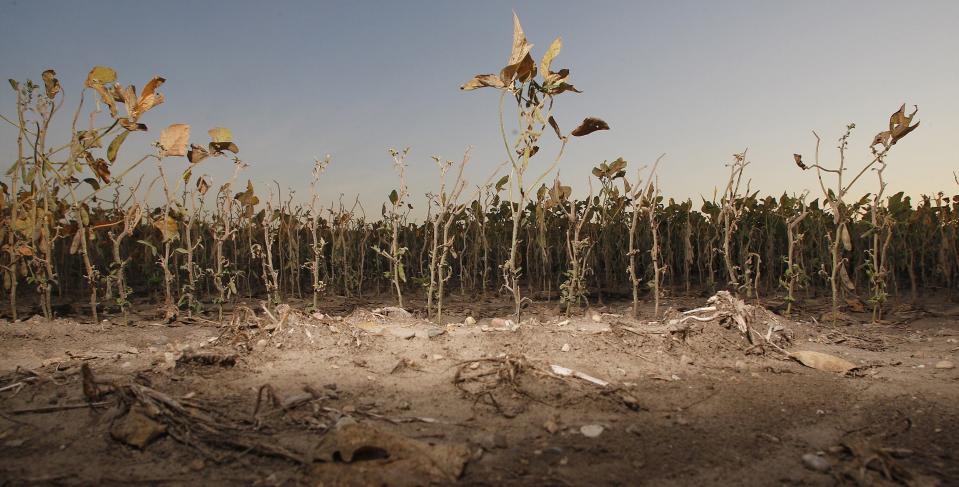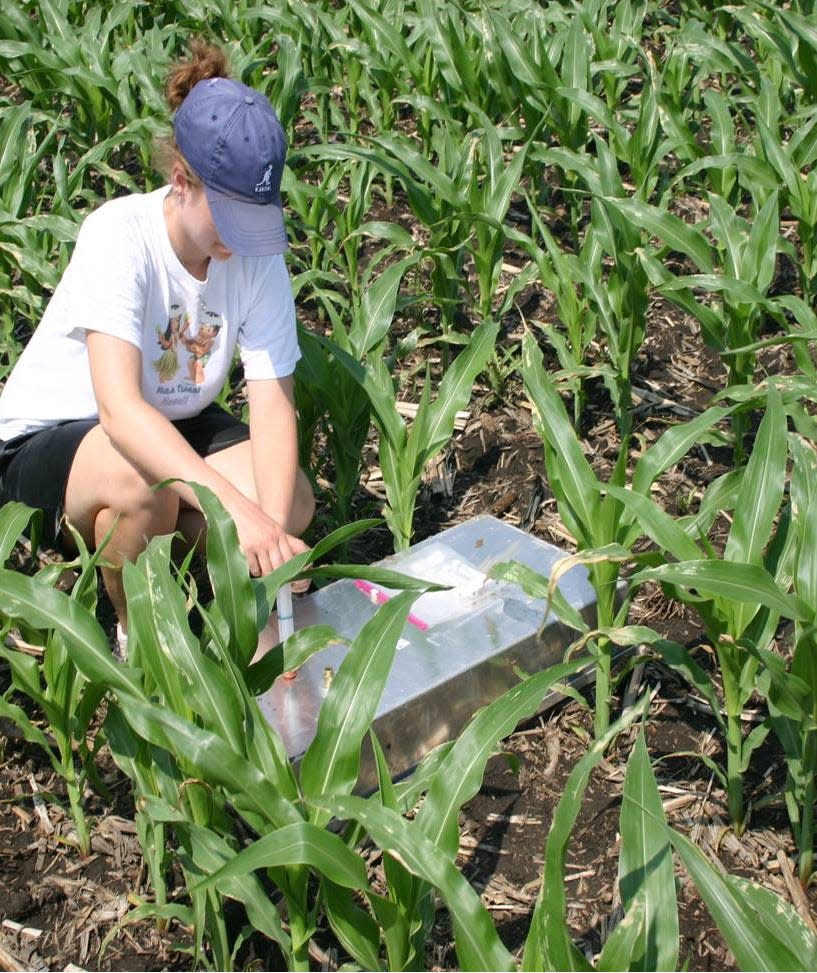Researchers tackle increased rainfall for more sustainable agriculture
Editor's Note: The following is part of a class project originally initiated in the classroom of Ball State University professor Adam Kuban in fall 2021. Kuban continued the project this fall, challenging his students to find sustainability efforts in the Muncie area and pitch their ideas to Deanna Watson, editor of The Star Press, Journal & Courier and Pal-Item. Several such stories are being featured in November and December 2022.
MUNCIE, Ind. – The Indiana Department of Agriculture estimates that corn and soybean make up 60% of the agricultural products sold in Indiana. And it’s these two massive swathes of the state’s agriculture that are some of the most vulnerable to climate change due to rising temperatures and excessive water.
“Some of the more subtle impacts of heat on crop development and growth is the changes in the timing of the phenology of the crop. When is it going to flower? When is the corn going to silk?” said Laura C. Bowling, NRES director & professor of agronomy at Purdue University.

On a basic level, heat stress amplified by climate change can be an issue for growing crops. Bowling explained that the heat causes the plants to conduct photosynthesis when the sun isn’t out, supplementing the process with stored sugars, which reduces grain yield.
Bowling explained that this extra activity also causes drought stress as the plants photosynthesize and respirate for longer without getting their needed water.
The damage of drought stress is only further increased due to climate change’s effect on Indiana’s weather patterns. An analysis by the Environmental Working Group, an environmental nonprofit, found that “precipitation increased in 92.5 percent — 683 counties in the Midwest — between 2001 and 2020.” Unlike on the west coast in areas like California, one of the main ways that climate change is affecting the Midwest is not drought but too much water.
According to Rebekah Frankson and Kenneth E. Kunkel,in the 2022 Indiana State Climate study, they found that “Indiana has also experienced an increase in the number of 2-inch extreme-precipitation events, which can cause severe flooding.” They found that while any given area typically experiences two of these extreme events, Indiana has had as many as four of these extreme-precipitation events in a span of four years.

Not only does excessive water pose a risk to plants, but it also interacts with the fertilizers we use. Jeffery Volenec, a professor of agronomy at Purdue University, has been studying the interaction between fertilizers and water.
Nitrous Oxide is one of the main fertilizers for corn. To meet the needs of a growing populace, more fertilizer is used to produce more corn, which can further seep into the environment, carried by things like excessive rainfall that doesn't have time to absorb into the soil.
“Nitrus Oxide, molecule per molecule, is 300 times more potent than CO2, so a small amount of Nitrus Oxide is a big deal,” said Volenec.
A lot of Volenec’s work is done within Purdue University’s Agronomy Center for Research (ACRE), a campus-based field research station for their agronomy department, to collect better data in tandem with their graduate students.
At ACRE, studying over a period of five years, Volenec and his team hope to collect more and more data for other scientists to plug into their models to predict future outcomes.
Volenec is not the only one tackling the issue.
Laura Bowling conducts her research at the Indiana Corn and Soybean Innovation Center (ICSI) within ACRE.
The ICSI is a shared lab space for students and professors to conduct agricultural research. Jason Adams is the facility manager, and he is always eager to talk about the work that goes on there.
“There’s a lot of plant breeding research going on — what I’d call agronomic research, so researching looking at cover crops, drainage patterns and nutrient deficiencies — things like that,” said Adams.
Bowling is one of those researchers, and just like Volenec, she’s looking at the way corn and soybeans use water. Many farms already use subsurface drains to keep their fields from ponding during periods of heavy rain, but Bowling is looking to improve that system.
She’s involved with drainage-water recycling, which should capture the water being drained from the field, preventing the harm it causes by going downstream into tributaries and rivers and storing it for later use in the drier months.
“Our particular prototype, we’re storing it in wetlands, so we’re trying to enhance the wetlands ecosystem, and we pump from that during the growing season for supplemental irrigation,” said Bowling.
Bowling’s prototype uses subsurface drains, which are already common in a lot of farms, as a way to prevent ponding, catch the water and stimulate the wetland ecosystem.
A 4-inch flexible water main allows the prototype to irrigate an adjacent field through surface drip irrigation: a process where small amounts of water, usually less than 20 liters an hour, are dripped onto the soil.
“We’re trying to figure out how to do this on the cheap, using existing low spots and depression areas that were never farmed because they’re too wet and using those as a small source of supplemental irrigation,” said Bowling.
This article originally appeared on Muncie Star Press: Researchers tackle increased rainfall for more sustainable agriculture

